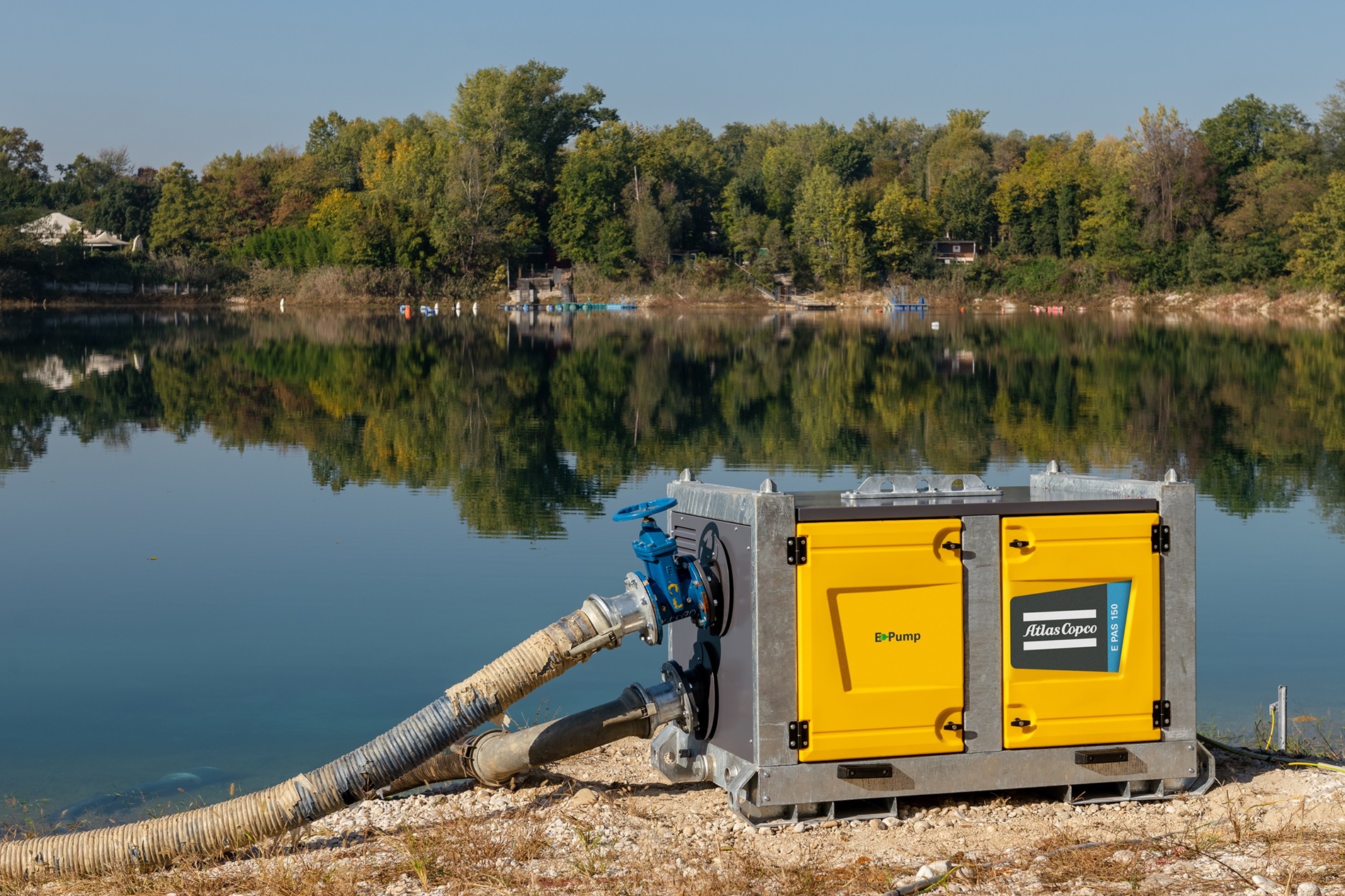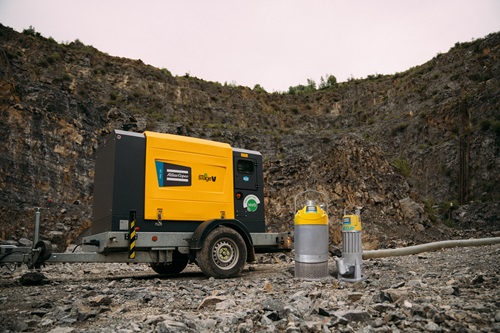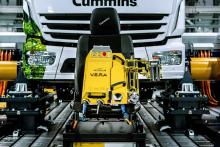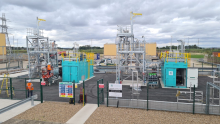
Bart Duijvelaar is the product marketing manager of Submersible Pumps, and Saksham Dube is the divisional marketing manager of Surface Pumps at Atlas Copco Power and Flow.
Traditionally known for their significant carbon footprint and reliance on fossil fuels, quarries are now embracing electrification to reduce emissions and improve operational sustainability. Like many other industries, quarries are going through an energy transition, and quarry managers are reviewing all the components across their sites so they can operate most sustainably, for example, by introducing electric vehicles and equipment.
One critical piece of quarry equipment is a dewatering pump, which ensures safety and productivity. This article discusses the need for reliable pumps, electrification and sustainability trends that are transforming quarry dewatering, leading them towards a more energy-efficient future.
Pumps are vital on-site
There are more than half a million quarries worldwide, all producing essential materials and aggregates for construction. Quarries of all types are prone to flooding, caused either by heavy rainfall or groundwater seepage, and this water can accumulate quickly. Too much water on site makes it extremely difficult to extract minerals or carry out mining operations effectively, and it is important to remove any excess water before it becomes a hazard.

Managing water is a crucial task that must be done effectively to protect quarrying and construction equipment and allow continued operations. Reliable pumps help to improve productivity as they prevent waterlogging and maximise uptime. Using dewatering pumps also ensures quarries meet environmental regulations and legislation to manage water properly and prevent run-off and the risk of pollution. By pumping it out, dewatering pumps drain a quarry to keep it clear of unwanted water.
Reduced CO2 footprint in quarries can be achieved through electrification
Surface dewatering pumps have traditionally been diesel-powered instead of electric submersible dewatering pumps. However, diesel-powered equipment produces carbon dioxide emissions and is recognised as a contributor to global warming.
McKinsey’s Creating the Zero Carbon Mine report states that the mining industry contributes approximately three per cent of global CO2 emissions, and it, therefore, has a large role in reducing emissions1.
There are three types of emissions within quarries: Scope 1 (emissions from diesel), Scope 2 (emissions from electricity generation), and Scope 3 (emissions from the supply chain and transport).
It is estimated that approximately 40 to 50 per cent of CO2 emissions come from diesel used in mobile equipment, with another 30 to 35 per cent from non-renewable electricity. One significant way to reduce emissions and operate more sustainably is to use electrical equipment and make sure the electricity source is renewable.
Challenges with electrification
The benefits of electrification are well documented. However, there are a few challenges associated with moving energy reliance away from fossil fuels and towards electricity, which include:
Ensuring an adequate power supply
The availability of reliable electrical power sources is one concern facing quarry managers. Ensuring that there is a dependable electricity supply to ensure uptime is key. Diesel is traditionally convenient because electricity is less readily available in quarries. However, energy storage solutions and solar generators are being developed and are now available, which can assist with reliable on-site power.
Resistance to change
People are inherently reluctant to change and bring in new practices. However, employers can overcome this by developing effective training programmes.
Cost
Purchasing new electric machines, tools, and supporting infrastructure requires high upfront costs. However, while costs are initially higher, they pay off over time, ultimately helped by reduced fuel costs.

The adoption of electric-powered pumps
Electrically powered pumps enable quarries to operate more energy efficiently, and Atlas Copco has a versatile range of electric dewatering solutions.
The advanced pump portfolio includes robust and reliable WEDA electric submersible pumps, which deliver best-in-class performance over a longer lifetime than comparable pumps. The WEDA pumps have innovative features, including a high performance-to-weight ratio, hardened high-chrome impellers and state-of-the-art Wear Deflector Technology. This special technology minimises wear, ensuring durability for a longer working life than alternatives. The pump range has been designed with the latest 3D modelling techniques to deliver high efficiency, thus lowering unplanned downtime issues in tough working environments like quarries.
The pump has also been built with maintenance and serviceability in mind. Thanks to the clever design, users can also conduct on-site inspection, maintenance, and repair, reducing downtime and associated costs.

Atlas Copco also has a versatile range of electric surface dewatering pumps – The E Pump range – which consists of different models in a canopy option for reduced noise and open set configuration. E Pumps offer reduced emissions with a low total cost of ownership and digital connectivity. They allow customers to reduce their CO2 footprint and operate in emission-restrictive areas with zero fuel consumption. The surface dewatering pump ranges, high heads and high flows are designed and developed to offer high performance, reliability, and ease of use. They are a plug-and-pump solution, making them quick to install. They are also available in different material configurations and options, such as full stainless-steel configuration. This makes E pumps the right product fit for quarrying applications.
In quarries, the portability of equipment is essential, as pumps need to be able to move easily to where they are needed the most. Both these pump ranges benefit from being highly mobile and versatile.

Conclusion
Governments and regulatory bodies increasingly recognise the importance of sustainable quarrying practices, and quarry managers are constantly under increased pressure to improve and increase efficiencies. By embracing electric-powered pumps and the latest technological advancements, quarries can reduce their CO2 footprint, improve operational efficiency, and contribute to a cleaner and healthier environment.
Changing mindsets to run electrically powered pumps and implementing the associated infrastructure is no easy feat. It takes time and investment, but ultimately, those who adopt this technology more quickly will gain the most competitive advantage. Also, quarries aligning themselves with their customers’ values and seeking to operate more sustainably will pay dividends, enhancing their reputation and productivity. In the future, electrical pumps will be increasingly sustainable, reducing emissions even further when powered with fossil-free electricity or renewable energy sources.










